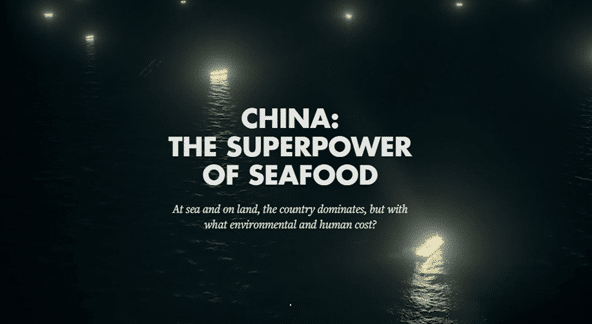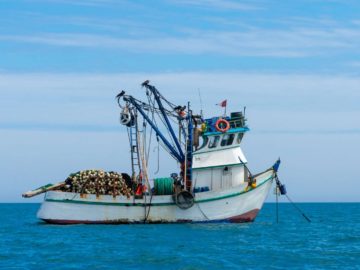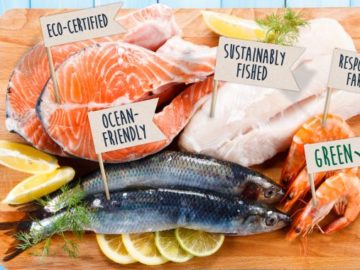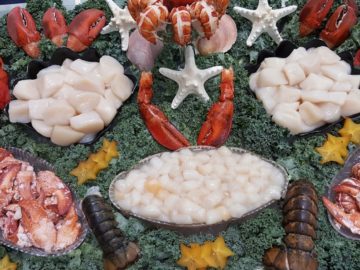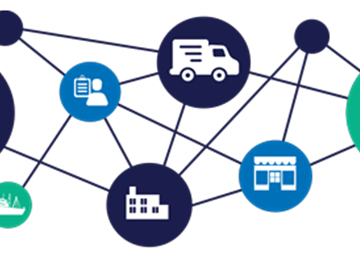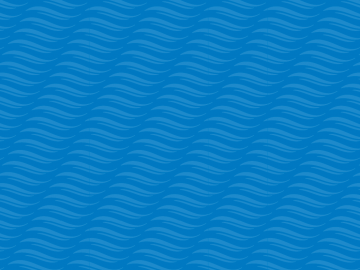A 2-part report by Ian Urbina’s Outlaw Ocean Project unveils a slew of human rights atrocities in superpower China’s seafood supply chain, and provides evidence that much of the seafood found on North American shelves is tied to Uyghur labor.
As evidence of its global significance, Urbina shares that China’s seafood industry accounts for a fifth of international seafood trade, is worth over thirty-five billion dollars and is responsible for catching approximately 5 billion pounds of seafood annually.
Part One of the report focuses on China’s opaque – and colossal – distant water fishing fleet that is notoriously challenging to monitor. Urbina’s unprecedented sleuthing reveals countless acts of inhumane working conditions, severe abuse, neglect, murder, debt bondage, illegal and unregulated fishing…and the list goes on.
Part Two shifts attention one step downstream where a myriad of evidence reveals that Uyghur minorities are forced to work in seafood processing plants in China. For years, the Chinese government has been forcibly relocating Uyghurs across the country through labor transfers and keeping them under strict surveillance. In addition to forced labor, acts of torture, beatings and forced sterilizations have been reported.
So, where does this seafood end up?
Despite both the Canadian and U.S. government describing China’s labor transfers from Xinjiang as a “form of genocide” and U.S. congress enforcing its Uyghur Forced Labor Prevention Act, the report finds:
“Much of the seafood sent to America and Europe are processed by Uyghur labor.”
The investigation reveals that major US and Canadian importers, including High Liner Foods, have bought seafood from Chinese factories that use Uyghur labor. Evidence suggests these products found their way to the shelves of major grocers across North America, including the following profiled on Seafood Progress: Costco, Loblaw, Sobeys and Walmart.
Most grocers and brands verify supplier compliance against their human rights policies by requiring they undertake third-party social audits. However, this method of verification is proven unreliable in detecting state-imposed forced labor when processing facilities are subject to self assessments where information can easily be withheld and inspections are scheduled in advance. Additionally, employees that are interviewed by auditing bodies are often afraid to speak candidly.
As a result of the limitations of social audits, Urbina tells us that “thousands of tons of seafood imported from factories using forced labor continue to enter the U.S.”
What’s more, the report divulges that all seafood plants found to be using forced labor from Xinjiang were certified by the Marine Stewardship Council (MSC).
As part of an ongoing campaign to assess and hold eco certifications to account, SeaChoice has found several limitations to the MSC’s Standard, including it being open to interpretation and the ability to extend timelines for implementation significantly.
In the report, Director of Greenpeace USA’s ocean campaigns, John Hocevar, offers a summary of some other major problems associated with certification schemes: 1) they are largely self-policing, 2) they lack third-party oversight or verification, 3) they focus on environmental concerns and neglect to properly address human rights issues, and 4) they typically do not cover vessels where abuses are most likely to occur.
So, how can such a flawed system be fixed?
Critical actions to address human rights abuses in seafood supply chains include:
- Stronger traceability. Seafood supply chains are notoriously complex and challenging to trace, and regulations in Canada and the US remain largely inadequate. For years, SeaChoice has pressured the Canadian government to bring its seafood traceability standards into the 21st century. There is a critical need for Canada to improve its regulations to support better data capture and exchange for seafood imported and sold in Canada, as well as improve enforcement to deter illegal practices and trade.
- Cease sourcing and advocate for systemic change. One critical action outlined in the Organization for Economic Cooperation and Development (OECD) guidance is to cease sourcing products with severe and irremediable adverse impacts. As a result of Urbina’s report, Albertsons stopped sourcing products from High Liner that were found to be tied to forced labor. Since then, High Liner announced they had cut ties with a Chinese company implicated in this investigation. Such efforts are encouraging; however, as identified in Oxfam’s fourth Supermarket Scorecard, companies also need to take a far more active role in addressing systemic human rights risks across the sector.
- Increase transparency. Despite demands for increased transparency across the seafood industry, corporations are petitioning to reduce public access to trade data. For example, the report highlights that The Commercial Customs Operations Advisory Committee (COAC)—which includes representatives from Walmart and Amazon – proposed in October 2022 that vessel manifest data be made confidential. In addition to embracing transparency, end buyers like Walmart must leverage their position in the chain to influence producers and importers to ensure the flow of critical product information from boat to plate.
- Look beyond certifications. Urbina’s expose, along with a host of others, clearly demonstrates the need for end buyers to stop counting exclusively on voluntary certifications and do a better job of investigating their own supply chains.
While Urbina’s most recent report focuses on China given its global significance, it’s important to note that accounts of human rights abuses continue to be reported on in the European Union and throughout international supply chains. It is becoming increasingly apparent that voluntary certifications and third-party social audits alone are not keeping seafood products connected to serious human rights and environmental violations off store shelves. Instead, we must advocate for stronger regulations and swift enforcement to shape global value chains, and motivate end buyers to leverage their prominent position to drive improvements upstream.
Check out other solutions posed in the Outlaw Ocean report, and continue to drive Seafood Progress with us by signing up for our newsletter.
